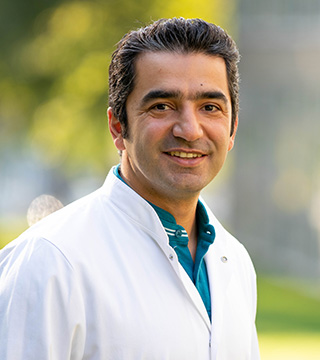Meet Bahram Ranjkesh
Advances in digital dentistry and dental materials to improve dental treatment
How can we optimize digital technologies to improve the clinical treatment outcome and how do dental materials affect the outcome of dental treatment? This is a central research theme for Assistant Professor Bahram Ranjkesh, born 1982.
Digital transformation is currently offering versatile tools in daily dental practice. According to Bahram Ranjkesh, the new technologies have significantly enhanced modalities for dental professionals and patient service in ways never imagined before; simultaneously, new technologies are pushing the boundaries in the development of novel dental materials.
“This highlights our further need for a deeper understanding of the advantages and limitations of the digital technology and novel materials. Whether the goal of operative dental treatment is functional, esthetic, or phonetic rehabilitations, safe and durable materials are a prerequisite. The wide range of materials challenges professionals in choosing the proper one for their clinical treatment of dental diseases”, says Bahram Ranjkesh.
In 2016, Bahram Ranjkesh obtained his PhD on development and optimization of novel calcium silicate cement and during the past years, he has been actively engaged in investigations on dental ceramics and cements. He is also involved in further development of a new generation of biocompatible hydrophilic calcium silicate cements for cementation, where cement’s favorable properties may support biomineralization and bacterial sealing.
According to Bahram Ranjkesh, we are now at one of the turning points in the history of dentistry, where digitalization has occupied the daily dental practice and made its clear mark on prosthodontics.
“At the moment, my research focus is on digital workflow in prosthodontics as well as the related materials including dental ceramics, 3D printable materials, and dental cements. I hope my research will contribute to the scientific field as well as the dental profession with better understanding of the applicability of digital technology and dental materials to improve the outcome of dental disease treatments and the overall oral health in society,” states Bahram Ranjkesh.
